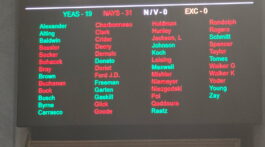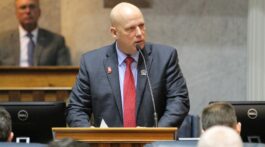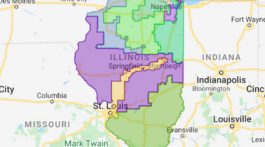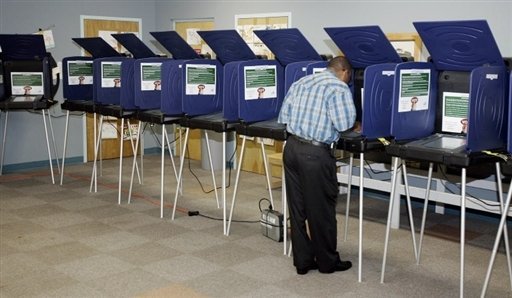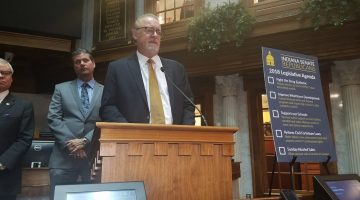by Connie Lawson
Recently, my office and I have come under attack for following federal and state law regarding voter rolls. Misinformation is being spread by various groups that if your name matches the name of a voter in another state or if you fail to vote, you will be removed from the rolls. Others have said voter list maintenance targets minority and low income voters. None of this is true!
Since I became Secretary of State, I have worked to ensure Indiana has clean data when it comes to our voter rolls. The public demands clean and accurate data when it comes to financial records, health records and vital statistics. Voter lists are no different.
Each election Hoosiers take notice that our rolls needs an update. We get calls from widowed spouses and parents whose child moved away from home years ago. These voters want to know why their loved one’s name is still on the rolls. They not only find it upsetting to see a long gone loved one’s name on the pollbook, but it also undermines their faith in our elections.
In 2016, a group issued a report that our voter rolls contained numerous inaccuracies including voters who were well over 100 years old and couldn’t possibly be alive. Members of the public were concerned when they heard this. At that time, I reminded the public of our voter list maintenance efforts and assured Hoosiers we were taking corrective action. Hoosiers were relieved to know we were taking measures to improve the accuracy of the state’s voter rolls.
In addition to improving voter confidence, clean voter rolls reduce election costs and provide accurate turnout results. Counties with bloated voter rolls are forced to spend more money to purchase extra equipment, secure additional locations and pay for election workers. Allowing invalid registrations to remain on the rolls distorts the reality of actual voter participation and turnout.
In 2016, the official voter turnout in Indiana was 58% of all registered voters, despite a record number of voters turning out to vote. Yet it is estimated if the voter list maintenance conducted this year had taken place before the 2016 general election, Indiana’s turnout would have been about 65% – among the best in the nation.
Along with the bi-partisan members of the Indiana Election Division, bi-partisan county election boards and county clerks, I am working to ensure Indiana has clean and accurate voter rolls. We are doing this according to federal and state law, and to date, not one voter has contacted my office to say they were improperly removed.
No one has been removed because their name matches a voter in another state. We do compare Indiana’s data to voter registrations in other states, but a simple match of a name or a name and date of birth is not enough for a match. Indiana has developed measures of protection against false matches. Before a county is even given a potential match, to research and consider, the record is subject to a detailed comparison that assigns points for matches in name, social security numbers and driver’s license number. A first name, last name and date of birth match only equals 55 points, 20 points short of a potential match. A middle name is only 5 points, so that is still not enough.
If a record reaches the 75 point threshold, then it is provided to the county to determine if the record is a match and the registration in the other state is more recent. The county may consider all information provided and perform whatever additional investigation the county deems necessary to determine if there is a match. If the county is unable to determine that the records match, or that the registration in the other state is more recent, that is the end of the process and the record stays on the rolls.
In addition, no one has been removed because they didn’t vote or due to their ethnicity or income. The state of Indiana does voter list maintain in a uniform and non-discriminatory manner following the federal rules that require voter list maintenance and the procedures spelled out in the law.
Every other year, postcards are mailed to Hoosier voters. If the postcard is returned due to inaccurate information, which indicates the voter is no longer qualified to vote at that address, a second forwardable postcard is mailed to the forwarding address. The second postcard ask the voter to update their registration information. If the voter fails to respond, the record will be marked inactive. Once a record is marked inactive, it is not removed from the rolls unless the voter misses the next two federal elections or otherwise fails to confirm their address is correct.
As I close, I want to address the uncertainty that clouds voter list maintenance across the country. In states that are attempting to comply with federal law, like Indiana, activist groups are suing to keep maintenance from being done. In states that are not participating, activist groups are suing to force the process. Performing voter list maintenance is the law according to the National Voter Registration Act.
This law was a compromise that required voter registrations to be available at government offices such as the BMV and voter list maintenance to be performed. We enforce the registration portion of the law uniformly but not the voter list maintenance piece. Last week I testified on Capitol Hill and encouraged Congress to clarify this expectation for the states and to uphold the compromise of the National Voter Registration Act. I am optimistic they will weigh in and I commend the efforts of state election officials around the country who are continuing to work hard in the face of this uncertainty.
Voter list maintenance is about updating voter information to be current and ensuring confidence in our electoral process. Our electoral process is central to our system of government. Therefore, we must take every action to protect the integrity of our elections.
Connie Lawson is the Indiana Secretary of State.





